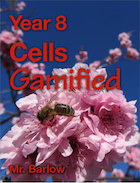I refer to Wikipedia all the time, I think it’s great!
And soon you’ll have a new reason to trust the information you find on Wikipedia: An optional feature called “WikiTrust” will color code every word of the encyclopedia based on the reliability of its author and the length of time it has persisted on the page.
Despite its popularity, Wikipedia has long suffered criticism from those who say it’s not reliable. Because anyone with an internet connection can contribute, the site is subject to vandalism, bias and misinformation.
Now, researchers have created a system to help users know when to trust Wikipedia. Called WikiTrust, the program assigns a color code to newly edited text using an algorithm that calculates author reputation from the lifespan of their past contributions. It’s based on a simple concept: The longer information persists on the page, the more accurate it’s likely to be.
Text from questionable sources starts out with a bright orange background, while text from trusted authors gets a lighter shade. As more people view and edit the new text, it gradually gains more “trust” and turns from orange to white. Read more here.







 Twitter
Twitter





